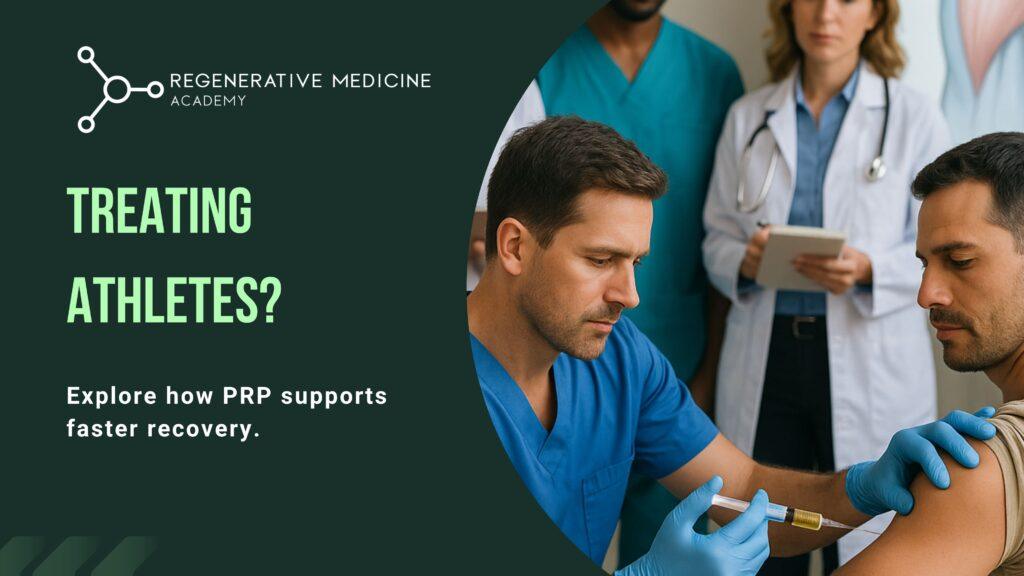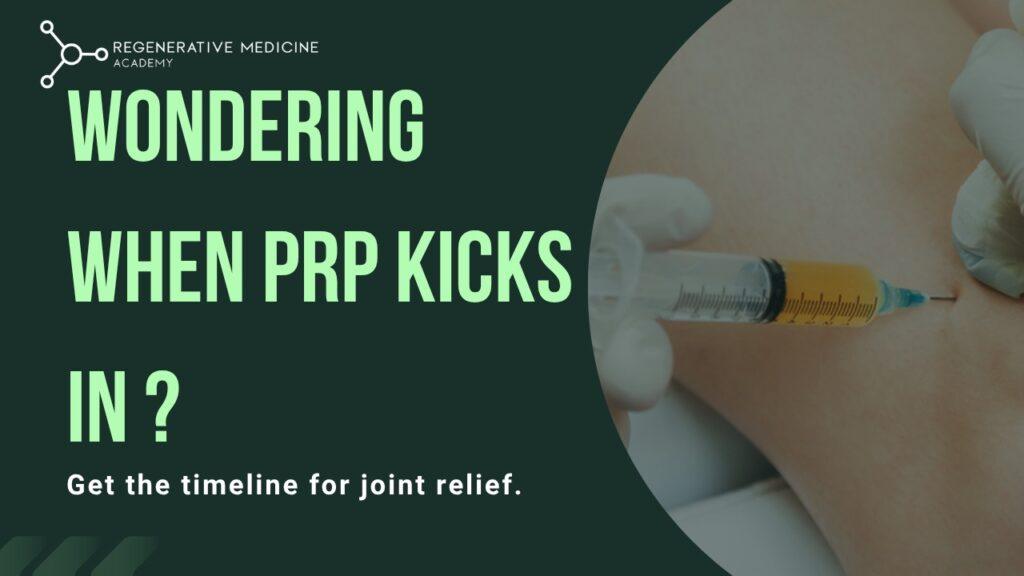A patient walks into your clinic, hopeful and desperate. They’ve tried physical therapy, cortisone shots, maybe even surgery—and nothing worked. They’ve heard about Platelet-Rich Plasma (PRP) therapy and ask if you offer it. But you pause. You’ve read about PRP, maybe watched a video or two, but you’re not trained in it. That hesitation is where opportunity slips—and where Platelet-Rich Plasma training makes all the difference.
Let’s unpack what is PRP training, what it covers, and why it should be on every new clinician’s radar—especially those stepping into the field of regenerative medicine.
Understanding the Basics: What Is PRP Training?
Before diving into the importance of training, let’s answer the main question—what is PRP training?
It’s a specialized educational program that teaches medical professionals how to safely and effectively perform Platelet-Rich Plasma therapy. This treatment involves drawing a patient’s blood, processing it to concentrate platelets, and re-injecting it into specific areas to promote natural healing. PRP is widely used for joint pain, sports injuries, skin rejuvenation, and even hair restoration.
Training in PRP includes both theoretical and hands-on instruction. It covers:
- Patient selection
- Blood draw and centrifugation process
- Injection techniques
- Sterile handling procedures
- Post-treatment care and documentation
While PRP itself is a simple concept, its application in clinical settings requires accuracy and confidence—both of which come through proper training.
Why PRP Is Gaining Popularity in Regenerative Medicine
PRP therapy has grown rapidly in recent years. Why? Because patients are increasingly looking for non-surgical, drug-free options that work with their body’s natural healing abilities. PRP fits right into that.
As a result, regenerative medicine clinics are seeing more demand for these services. And yet, many clinicians—especially newer ones—still lack the hands-on skills or formal education in PRP. That’s where structured training courses come in.
For those asking what is PRP training online, many programs now offer flexible online modules for theory, followed by optional live sessions for in-person skills application. This setup allows new clinicians to start learning quickly, even while finishing school or working part-time.
What Skills Do You Learn in a Training Program?
Let’s look at the specific skills and knowledge new practitioners can expect to gain from PRP therapy training programs.
1. Understanding Platelet Biology and Mechanism of Action
PRP therapy isn’t magic—it’s science. A solid program explains how platelets aid healing, what growth factors are released, and how these elements affect tissues like tendons, ligaments, cartilage, and skin.
2. Centrifuge Protocols and Equipment Use
One of the most hands-on aspects of this therapy is preparing the PRP itself. You’ll learn how to handle and process blood samples using different centrifuge machines, understand platelet concentration ratios, and avoid common contamination risks.
3. Injection Techniques
You’ll also learn to inject PRP into joints, tendons, scalp, or skin using ultrasound guidance or anatomical landmarks—based on the treatment focus.
4. Patient Consultation and Treatment Planning
It doesn’t work for every condition or every patient. Training helps you evaluate candidacy, set expectations, and provide informed consent.
5. Documentation and Legal Considerations
Understanding what to record, how to follow up, and staying compliant with state or country-specific guidelines is part of responsible practice.
PRP Certification: Does It Matter?
Short answer—yes. Completing training courses often results in a certificate that shows you’ve completed formal training. While PRP is not regulated in the same way pharmaceuticals are, having documented training is critical for:
- Professional credibility
- Insurance coverage and documentation
- Clinic credentialing
- Patient trust
For new clinicians, this certification can be a great way to stand out in job interviews or attract patients in private practice.
Why New Clinicians Should Start with PRP Training
If you’re early in your medical career, the idea of adding another certification might feel overwhelming. But investing in training now can pay off in many ways.
1. Expanding Your Treatment Options
With PRP, you’re not just treating symptoms—you’re supporting tissue repair. That allows you to help patients who may have failed traditional treatments.
2. Staying Competitive in the Job Market
Clinics specializing in regenerative medicine look for team members who can offer these services. Having PRP skills may give you a competitive edge—especially in orthopedic, sports medicine, or aesthetic settings.
3. Building Patient Trust and Authority
Patients often research treatments like PRP before stepping into a clinic. Being trained means you can speak with confidence and back your advice with action.
What to Look for in PRP Training Courses
Not all courses are equal. If you’re researching options, especially PRP courses that are available online or hybrid, look for:
- Programs taught by licensed physicians or specialists with PRP experience
- Options for both theory and hands-on instruction
- Certification upon completion
- Updated protocols that align with current clinical standards
- Supportive learning materials like videos, live demos, and ongoing resources
If you’re wondering what PRP training is online versus in-person—online options are great for flexibility, while in-person sessions are valuable for mastering technique. Some of the best programs combine both.
Common Applications of PRP You’ll Learn About
As a trainee, you’ll also get familiar with the wide applications of PRP across fields:
Orthopedics and Sports Medicine
- PRP for knee osteoarthritis
- Tendon injuries like tennis elbow or Achilles tendinopathy
- Ligament injuries
Aesthetic and Dermatology
- PRP for facial rejuvenation (“vampire facial”)
- Acne scarring
- Under-eye circles
Hair Restoration
- Treating androgenic alopecia and thinning hair
- Combining PRP with microneedling
Learning these use cases gives you a better sense of where and how you can apply your PRP skills after training.
Getting Started: When Is the Right Time?
If you’re still in medical school or just finished residency, you might feel like you need more clinical experience first. But actually, Platelet-Rich Plasma training is well-suited for early-career clinicians. It builds practical procedure skills, sharpens patient communication, and opens doors to jobs in regenerative practices.
You don’t need to wait until you’re “more experienced” to start. The earlier you learn, the sooner you’ll be comfortable offering PRP as a treatment.
Final Thoughts
So, what is PRP training really about? It’s about preparing new clinicians with the real-world skills to perform a treatment that is increasingly requested by patients and used across specialties.
Whether you’re planning to work in orthopedics, pain management, dermatology, or general practice, learning PRP gives you a foundation in regenerative care—and helps you grow with a field that’s not going away anytime soon.
And if you’ve been wondering whether to explore PRP training courses or if you’re unsure what is PRP training online, know this: Starting your education now will put you ahead of the curve, not behind it.
Ready to Take the First Step?
If you’re a medical student or new clinician ready to gain practical PRP skills, the Regenerative Medicine Academy offers beginner-friendly training designed just for you. Learn from real experts, get certified, and join a growing field where your skills can make a difference.Start your PRP training journey with Regenerative Medicine Academy today.



